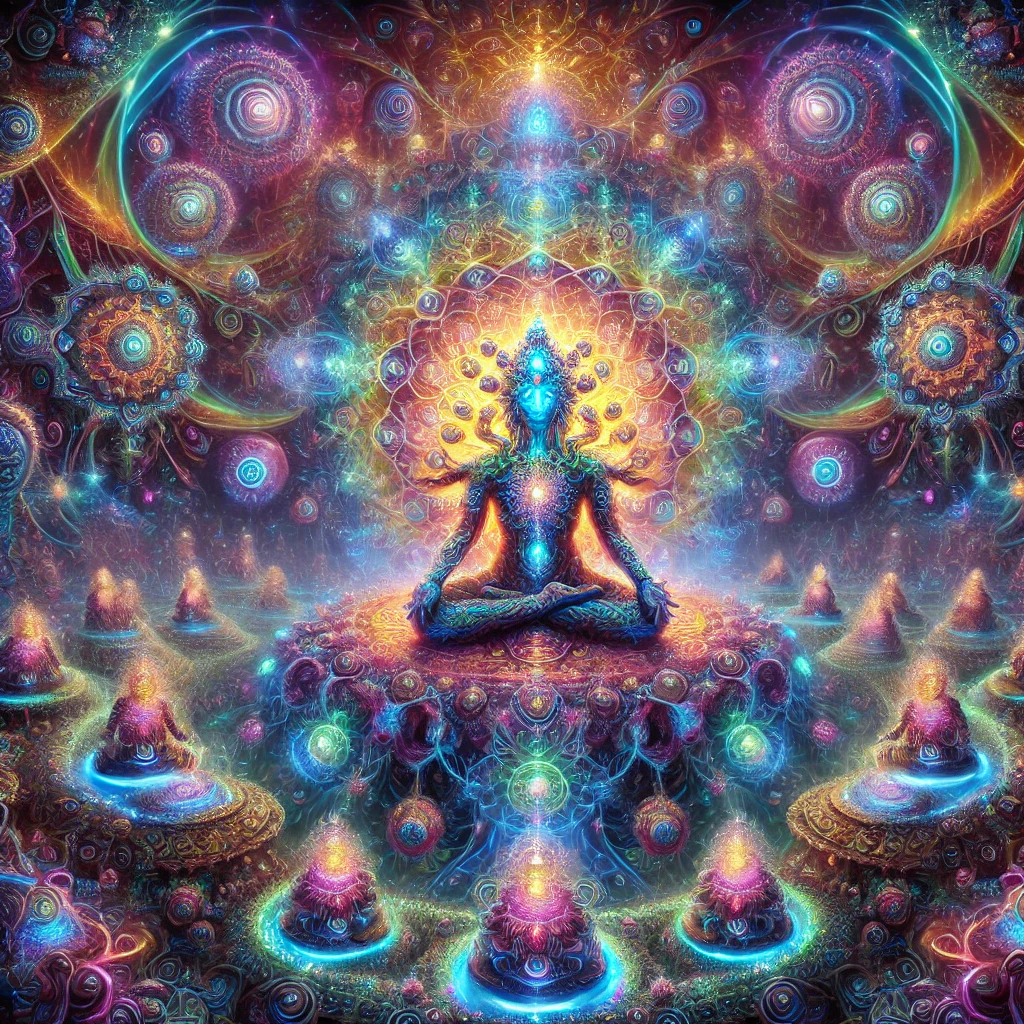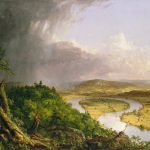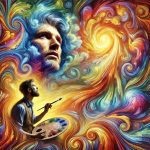
DMT, or Dimethyltryptamine, has long been associated with mystical experiences, profound visions, and the expansion of consciousness. Known as the “spirit molecule,” this naturally occurring psychedelic has captivated scientists, shamans, and artists alike. Throughout history, creatives have turned to altered states of consciousness for inspiration, using visions induced by psychedelics to create groundbreaking works of art. In recent decades, DMT has emerged as one of the most powerful substances influencing the world of visionary and psychedelic art.
The link between psychedelics and artistic creativity is not a new phenomenon. Ancient cultures integrated plant-based psychedelics into their spiritual and artistic traditions, producing artwork that mirrored the surreal and otherworldly imagery found in DMT experiences. More recently, the 1960s counterculture movement saw a surge in psychedelic-inspired art, with artists using substances like LSD, mescaline, and psilocybin to push creative boundaries. DMT, however, stands apart due to its intensity, brevity, and uniquely intricate visuals that defy conventional artistic representation.
Contemporary artists who experiment with DMT often describe their experiences as stepping into a hyper-dimensional realm filled with kaleidoscopic patterns, alien-like beings, and celestial landscapes. These themes have heavily influenced modern visionary art, a movement that seeks to depict the ineffable through detailed and luminous paintings. Artists such as Alex Grey, Pablo Amaringo, and Robert Venosa have credited psychedelics, including DMT, with opening their creative channels to divine inspiration.
This article explores the fascinating relationship between DMT and artistic creativity, from its historical roots to its modern-day impact. We will examine how psychedelic visions shape artistic imagery, delve into the lives of famous DMT-inspired artists, and investigate the neurological mechanisms that link DMT to creative expression. Additionally, we will discuss the ethical and legal implications of using psychedelics for artistic purposes and speculate on the future of DMT-inspired digital and immersive art.
What is DMT? A Brief Overview
DMT is a potent psychedelic compound that naturally occurs in plants, animals, and even the human brain. It was first synthesized in 1931 by Canadian chemist Richard Manske, but its psychoactive properties remained largely unknown until the 1950s. In indigenous cultures, particularly in the Amazon Basin, DMT has been used for centuries in the form of Ayahuasca, a brew that combines DMT-containing plants with monoamine oxidase inhibitors (MAOIs) to prolong the psychedelic experience. Traditional shamans consider Ayahuasca a sacred medicine, used to communicate with spirits and receive visions.
DMT is unique among psychedelics due to its rapid onset and short duration when smoked or vaporized. A typical experience lasts between 10 to 20 minutes, yet users report encountering expansive, otherworldly landscapes filled with intricate fractals, multi-dimensional entities, and profound spiritual insights. Some users describe meeting “machine elves” or beings that appear to impart cosmic knowledge, an element that has become a recurring theme in psychedelic-inspired artwork. These experiences often feel as though they exist outside of time, making them challenging to translate into visual representation.
Scientific interest in DMT increased significantly in the 1990s when Dr. Rick Strassman, a psychiatrist and researcher at the University of New Mexico, conducted government-approved studies on the substance. In his book, DMT: The Spirit Molecule (2000), Strassman documented participants’ reports of contact with intelligent entities, divine realms, and profound emotional transformations. His research brought DMT into public consciousness, influencing artists, filmmakers, and musicians interested in psychedelic states.
Although DMT remains illegal in most countries, ongoing research continues to explore its potential benefits for mental health, spirituality, and creativity. Artists who use DMT often describe their experiences as a gateway to the collective unconscious, unlocking visions that feel both deeply personal and universally significant. This has fueled the rise of psychedelic art, a genre that seeks to convey the beauty and complexity of these altered states.
Psychedelics and Art: A Historical Perspective
The connection between psychedelics and artistic creativity dates back thousands of years. In ancient civilizations, mind-altering substances were often used in religious ceremonies, influencing the creation of sacred art and symbolic imagery. Archaeological evidence suggests that early humans consumed psychedelic plants, such as Psilocybe mushrooms and peyote, to enhance their spiritual visions. Some of the earliest depictions of hallucinogenic experiences can be found in prehistoric cave paintings, which feature complex patterns, geometric shapes, and anthropomorphic figures that resemble modern-day psychedelic art.
In Mesoamerican cultures, the use of psychedelics played a significant role in religious rituals and artistic expression. The Aztecs and Mayans consumed substances like psilocybin mushrooms, morning glory seeds, and DMT-containing snuff to communicate with deities and receive divine guidance. Their temples, murals, and pottery often depict serpentine beings, celestial visions, and intricate fractals, elements that closely resemble the visual experiences reported by modern DMT users. The vivid and highly detailed nature of these artworks suggests that psychedelics were integral to their creative and spiritual practices.
During the 19th and 20th centuries, interest in altered states of consciousness grew among European artists, writers, and intellectuals. The Surrealist movement, led by figures like Salvador Dalí and André Breton, sought to tap into the subconscious mind through dreams, trance states, and automatic drawing. While not all Surrealists used psychedelics, their emphasis on irrational imagery and dreamlike landscapes aligns with the effects of substances like DMT. Some art historians speculate that Surrealist works may have been indirectly influenced by early reports of psychedelic experiences.
The 1960s counterculture movement brought psychedelics into mainstream art, music, and film. Artists associated with the Psychedelic Art Movement, such as Peter Max and Mati Klarwein, created works that embodied the vibrant, fluid, and cosmic aesthetic of LSD and DMT experiences. Album covers, concert posters, and underground comics featured psychedelic visuals, mandalas, and optical illusions, reflecting the altered states of consciousness that inspired them. The legacy of this movement continues today, with contemporary visionary artists expanding on the tradition of translating psychedelic experiences into visual form.
The Psychedelic Vision: How DMT Shapes Artistic Imagery
DMT-induced hallucinations often share common visual characteristics, making them a rich source of inspiration for artists. One of the most frequently reported elements is fractal geometry, where infinitely complex patterns appear to unfold in multiple dimensions. These fractals, often seen in vivid neon colors, resemble sacred geometry, Islamic tessellations, and mandalas, suggesting a universal mathematical structure underlying consciousness. Many artists attempt to capture these intricate patterns, using digital tools and traditional media to recreate the symmetry and fluid motion experienced during a DMT trip.
Beyond geometric designs, DMT visions frequently include bioluminescent, alien-like entities, sometimes referred to as “machine elves.” These beings often communicate telepathically and appear to radiate intelligence, benevolence, or divine energy. Artists like Alex Grey have depicted these encounters in their work, portraying transcendent, multi-eyed figures surrounded by pulsating light fields. The challenge of translating such non-verbal, ultra-dimensional experiences into visual form is a defining feature of psychedelic and visionary art.
Many DMT users report experiencing synesthesia, a phenomenon where senses blend together, allowing one to “see” sounds or “hear” colors. This leads to highly immersive artistic experiences where music, movement, and light merge into one interconnected tapestry. Some artists use color theory and dynamic compositions to mimic the fluid and ever-changing nature of a DMT journey, capturing its ephemeral beauty on canvas or in digital media.
Another key feature of DMT-inspired art is the presence of sacred and religious symbolism. Many users describe encounters with divine beings, celestial palaces, or environments that resemble Hindu, Buddhist, and Mesoamerican spiritual iconography. Whether these visions stem from the subconscious mind or an external reality remains an open question, but their impact on artistic expression is undeniable. Visionary artists often incorporate mythological and spiritual themes, bridging the gap between the personal, the mystical, and the cosmic.
Famous Artists Influenced by DMT and Psychedelics
Throughout history, many artists have credited psychedelics, including DMT, LSD, and psilocybin, with opening new creative dimensions. One of the most well-known artists in this realm is Alex Grey, a visionary painter whose work explores the intersection of spirituality, consciousness, and human anatomy. Born in 1953, Grey’s art gained widespread recognition in the 1990s, particularly for his intricate depictions of energetic auras, sacred geometry, and multi-dimensional beings. His most famous works, including The Sacred Mirrors series, are deeply influenced by his personal experiences with psychedelics, which he describes as windows into higher realms of existence.
Another influential artist inspired by DMT is Pablo Amaringo (1938–2009), a Peruvian painter and former shaman whose work vividly depicts Ayahuasca visions. Amaringo’s paintings are filled with mystical landscapes, spirit guides, and luminous serpents, reflecting the traditional Amazonian perspective on entheogenic experiences. His 1991 book, Ayahuasca Visions: The Religious Iconography of a Peruvian Shaman, remains one of the most detailed visual records of Ayahuasca-induced imagery. His art serves as both a cultural preservation effort and a gateway for outsiders to understand the depth of DMT-fueled indigenous spirituality.
Robert Venosa (1936–2011) was another pioneering figure in psychedelic and visionary art, known for his surreal, otherworldly landscapes and figures. Influenced by both Surrealism and psychedelic experiences, Venosa’s work bridges the gap between classical painting techniques and contemporary visionary aesthetics. He was also closely associated with Salvador Dalí, further reinforcing the link between psychedelic states and avant-garde artistic expression. His paintings frequently incorporate light-filled beings, interdimensional architecture, and ethereal landscapes, mirroring common themes found in DMT experiences.
Modern artists continue to be influenced by DMT and altered states of consciousness, using digital tools and new media to push the boundaries of psychedelic art. Artists such as Luke Brown, Amanda Sage, and Android Jones have integrated DMT-inspired visuals into digital painting, immersive installations, and virtual reality experiences. Their work expands the accessibility of psychedelic art, allowing audiences to experience hyper-dimensional visuals in ways that traditional media could never fully capture. As technology advances, these artists are redefining how psychedelic visions can be shared and experienced.
DMT, Creativity, and the Brain: A Neuroscientific Perspective
Scientific research into DMT’s effects on the brain has provided fascinating insights into its role in creativity and altered perception. DMT primarily interacts with serotonin receptors, particularly the 5-HT2A receptor, which plays a crucial role in modulating perception, mood, and cognitive flexibility. This receptor is also linked to increased activity in the prefrontal cortex, a region associated with complex thought, problem-solving, and abstract reasoning—all essential components of artistic creativity. Studies suggest that psychedelics may enhance the brain’s ability to form novel connections, leading to unique and unconventional artistic insights.
Another major neurological effect of DMT is its influence on the default mode network (DMN), a system in the brain responsible for self-referential thinking and the maintenance of the ego. Psychedelics like DMT have been shown to temporarily suppress DMN activity, leading to a phenomenon known as ego dissolution. This can allow artists to bypass self-imposed creative limitations, enabling them to access new modes of expression that feel profoundly intuitive and uninhibited. Many artists report that under the influence of DMT, their sense of self disappears, allowing them to feel a pure connection to the creative process itself.
In addition to its cognitive effects, DMT induces hyperactivity in the visual cortex, which explains why users experience highly detailed, rapidly shifting imagery. Unlike ordinary dreams or imagination, DMT visuals appear to be more structured, intricate, and immersive, as if the brain is processing an external reality rather than generating random images. Some scientists propose that DMT enhances neural plasticity, allowing the brain to explore novel visual patterns and symbolic associations that might be otherwise inaccessible. This aligns with reports from artists who claim that DMT opens doorways to dimensions beyond ordinary perception.
Comparing DMT’s impact on creativity to other psychedelics, researchers have noted that while LSD and psilocybin tend to induce fluid, dreamlike states, DMT is unique in its extreme intensity and structured, almost mechanical visuals. This has led some to speculate that DMT taps into a deeper cognitive reservoir that is normally inaccessible in waking consciousness. Whether these visions are purely internal projections or glimpses into another dimension remains an open question, but their artistic significance is undeniable.
Ethical and Legal Considerations of DMT and Art
Despite its profound creative potential, DMT remains a Schedule I controlled substance in the United States, United Kingdom, Canada, and most of Europe, meaning it is considered to have no accepted medical use and a high potential for abuse. However, in some countries, such as Brazil and Peru, Ayahuasca (which contains DMT) is legally used in religious and shamanic practices. The legal landscape surrounding DMT is complex, with growing advocacy for decriminalization and medical research pushing for policy changes. Artists who use DMT must navigate legal risks and ethical considerations, particularly in countries with strict drug enforcement policies.
One ethical concern surrounding DMT-inspired art is the potential for cultural appropriation. Indigenous traditions, particularly those of the Shipibo-Conibo people of the Amazon, have long incorporated psychedelic visions into their artistic and spiritual practices. Some critics argue that Western artists who use DMT-inspired imagery may be exploiting sacred traditions without proper understanding or respect. However, many visionary artists actively acknowledge indigenous influences, seeking to honor rather than appropriate these traditions.
Another issue is the question of responsible psychedelic use in artistic practice. While DMT can enhance creativity and perception, it is not without risks, including psychological distress, depersonalization, and intense existential experiences. Some artists have reported that DMT-induced visions can be overwhelming or even disturbing, making it difficult to integrate the experience into their creative work. Responsible use, proper set and setting, and guidance from experienced practitioners can help mitigate potential negative effects.
As public perception of psychedelics continues to shift, more artists and researchers are advocating for regulated, responsible use. Recent studies on psilocybin therapy and MDMA-assisted psychotherapy have contributed to a more nuanced discussion on the benefits and risks of psychedelics. If laws continue to evolve, DMT may one day be recognized as a legitimate tool for artistic inspiration, leading to greater acceptance and accessibility in creative communities.
The Future of DMT-Inspired Art
As technology advances, the possibilities for DMT-inspired art continue to expand. The rise of digital painting, artificial intelligence (AI) art generation, and virtual reality (VR) allows artists to create fully immersive psychedelic experiences that closely mimic DMT-induced visuals. Platforms such as Tilt Brush and Unreal Engine enable creators to construct multi-dimensional landscapes, bringing the hyper-dimensional realms of DMT to life in ways that were previously impossible.
Virtual reality is becoming a particularly exciting frontier for psychedelic-inspired experiences. Companies like Microdose VR are developing programs that simulate psychedelic journeys, allowing users to explore fractal environments, sacred geometry, and celestial beings without consuming any substances. These developments suggest that the future of visionary art may be deeply intertwined with interactive technology, offering new ways to experience and share DMT-inspired visuals.
With ongoing research into psychedelic-assisted creativity, it is possible that DMT and similar compounds may one day be used as legitimate artistic tools, much like caffeine or meditation. As discussions around decriminalization and medical use continue, more artists may feel encouraged to explore the visionary landscapes of DMT in their work. Whether through traditional painting, digital media, or virtual worlds, DMT will likely remain a key influence on the evolution of art and creativity.
Key Takeaways
- DMT has been a powerful influence on artists throughout history, particularly in visionary and psychedelic art movements.
- Common themes in DMT-inspired art include fractals, sacred geometry, celestial beings, and hyper-dimensional landscapes.
- Famous artists like Alex Grey, Pablo Amaringo, and Robert Venosa have used psychedelics, including DMT, to enhance their creative expression.
- Scientific research suggests DMT enhances creativity by altering brain activity, suppressing the default mode network, and increasing neural plasticity.
- The future of DMT-inspired art may involve digital technology, virtual reality, and AI-generated psychedelic visuals to create immersive artistic experiences.
FAQs
1. How does DMT influence artistic creativity?
DMT induces vivid, otherworldly visions that artists attempt to translate into visual form. It enhances pattern recognition, expands perception, and alters brain function, fostering unique creative insights.
2. Which famous artists have been inspired by DMT?
Artists like Alex Grey, Pablo Amaringo, Robert Venosa, Luke Brown, and Android Jones have incorporated DMT-inspired imagery into their paintings, digital art, and immersive installations.
3. What are common visual themes in DMT-inspired art?
DMT art often features fractal geometry, glowing entities, hyper-dimensional structures, intricate patterns, and vibrant color schemes resembling sacred or cosmic landscapes.
4. Is DMT legal for artistic or spiritual use?
DMT is illegal in most countries but is allowed in some religious contexts, such as Ayahuasca ceremonies in Brazil and Peru. There is ongoing advocacy for decriminalization and medical research.
5. How is technology shaping the future of DMT-inspired art?
Virtual reality (VR), AI-generated art, and digital painting are allowing artists to create immersive psychedelic experiences, pushing the boundaries of traditional artistic expression.




